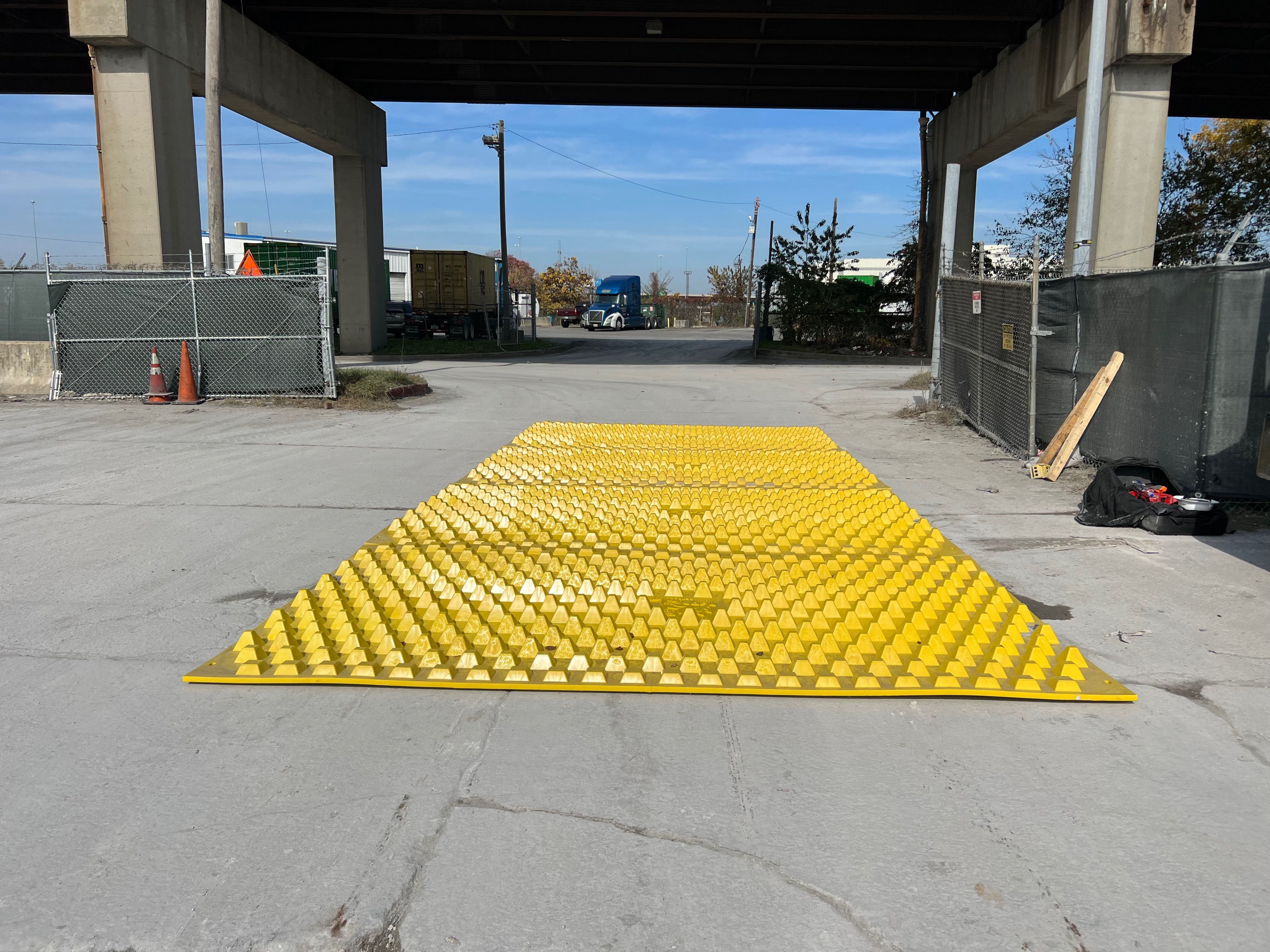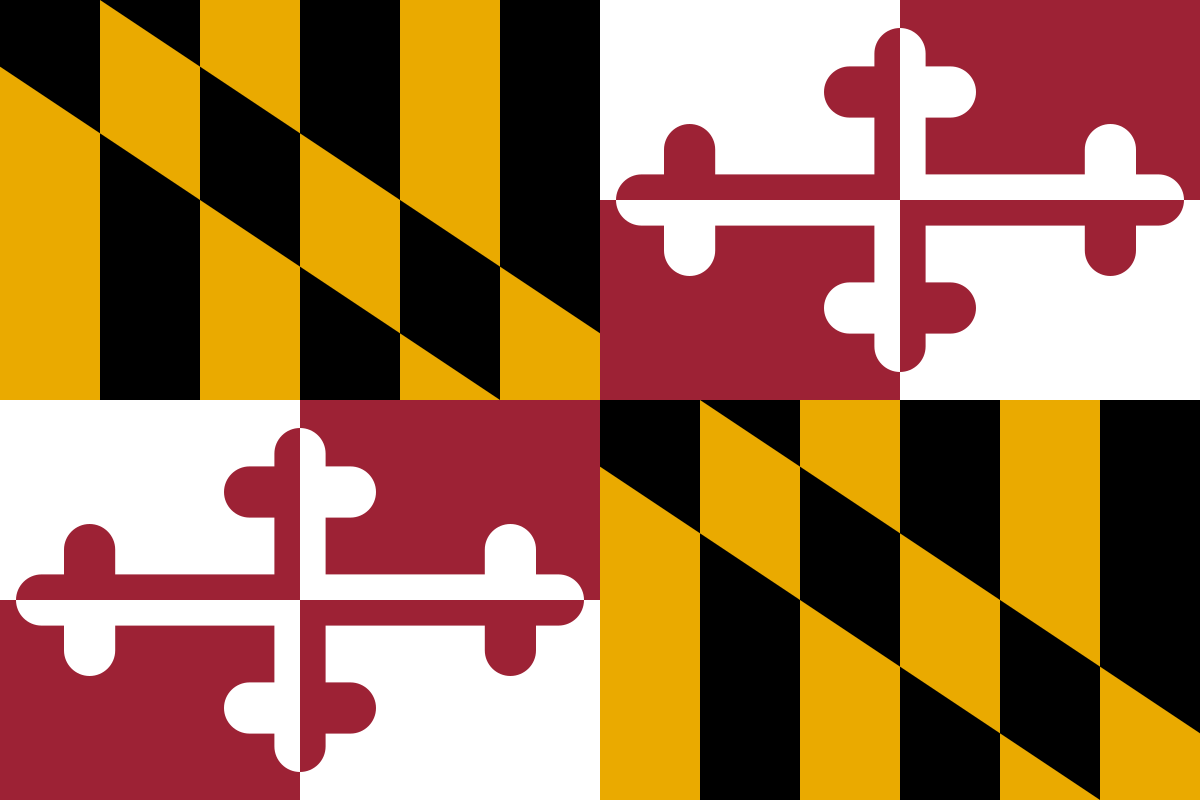Maryland Stabilized Construction Entrance BMP Detail
A defining characteristic of Maryland’s geography is miles of shoreline surrounding Chesapeake Bay. Notably, Chesapeake Bay is celebrated as being the largest inland estuary in the continental United States and is fed directly by the runoff of the state’s surface waters. From the northern Elk Neck down to St. Inigoes Forrest, Chesapeake Bay and the surrounding rivers provide a habitat for the native wildlife both aquatic and terrestrial.
As urbanization and dense populations developed, protections were implemented to protect the quality of the surface water which is used for drinking water and crop irrigation. Residents, businesses, and government bodies work together to protect the ecosystem and support the fishing, game and agricultural industries in the state.
Maryland NPDES Stormwater Permits
To protect the state’s surface waters from pollution, the Clean Water Act of 1972 established the National Pollution Discharge Elimination System (NPDES) which requires permits for all water discharges from industrial, municipal or construction activities. The Maryland Department of the Environment (MDE) administers the NPDES permit program and reviews applications to ensure that protections are in place to prevent pollution during operations. A permit is required for any project that will disturb an area with a footprint equal to 5,000 square feet or more and 100 cubic yards or more and the permit is required before any work begins. The most common permit for construction activities is the General Permit for Stormwater Associated with Construction Activity (14-GP).
When applying for coverage under the general permit, operators must design and submit an Erosion and Sediment Control Plan (ESC) (sometimes called a Stormwater Pollution Prevention Plan or SWPPP). This plan reveals potential pollution sources and states which techniques the contractor will use to contain the tracking of sediment and contaminated water off of the site. These techniques are referred to as Best Management Practices or BMPs. After the ESC Plan is approved, the permit is issued, and the plan is used to guide pollution and erosion control procedures throughout each phase of the project.
Stabilized Construction Entrance
One of the first BMPs to be implemented on any site is the construction of the Stabilized Construction Entrance. The Stabilized Construction Entrance, or SCE, is designed to prevent sediment from leaving the work zone and to keep the roadways clean. Sediment laden water which is deposited onto roadways will enter storm drains and drain into nearby surface waters which cause excessive sedimentation. The Construction Entrance BMP is to minimize sediment tracking and ensure the safety and stability of the vehicles and drivers as they traverse these high use areas.
Examples and specifications for common techniques including the traditional gravel pad SCE are described in the Maryland Standards and Specifications for Soil Erosion and Sediment Control handbook in Section B-1. One feature that the handbook recommends for all entrances is the location of the egress points which are recommended to be built on the high side of the project to prevent water from draining towards the exit and onto an impermeable roadway. The handbook also specifies the minimum maintenance schedule which can be determined by the expected traffic, by observing how much sediment is tracked onto the roadways, additional maintenance is recommended in response to rain events.
Gravel Pad Entrance
A traditional technique for mitigating vehicle tracking at egress/ingress points is a Stabilized Gravel Pad. A well-maintained gravel entrance pad is effective at removing large sediment from the tread of the vehicles as they leave the site. The handbook includes specifications for gravel pads which state that the Stabilized Aggregate Entrance must be a minimum of 50’ in length, 6” in depth, 10’ in width, and a minimum of a 10’ flare to allow for the vehicle turning radius. Also required for a proper SCE is an underlain non-woven geotextile fabric placed under the aggregate and used to separate the native soil from the sediment dislodged from the construction vehicles.
As traffic compacts the gravel, the entrance may require maintenance. Frequent monitoring of the condition and effectivity of the entrance must be conducted by the site operator. Maintaining this type of SCE includes top filling with additional gravel, and road sweeping to capture residual sediment that is tracked onto the road.
In cases where the gravel pad is not sufficient to minimize sediment tracking, alternate BMPs can be used to mitigate vehicle tracking.
Wash Rack Option
To increase the performance of a gravel pad entrance a Wash Rack may be added. The Wash Rack Option is a zone within the Gravel Pad where a laborer uses a pressure washer to clear and clean excessive sediment from the wheels and wheel wells of the construction vehicles. Current wash rack designs include automated stations which spray tires and capture excess water for reuse. The Wash Rack is constructed of rows of raised concrete or a steel structure which allows drainage through the rack as vehicles are sprayed off. This option can be added to a SCE design when the aggregate entrance is insufficient in keeping debris and material from the public roadways.
Wash Rack design includes a drainage system which diverts the polluted discharged water into a sediment trapping device. This SCE option requires a supply of water and sediment basin to capture the expelled water. Maintenance of the wash station can involve resupplying with water, clearing blockages in the water lines and emptying sediment basins.
FODS Vehicle Trackout Control Mats
A modern BMP for minimizing vehicle sediment tracking is the FODS Trackout Control System. The system is composed of a single layer of HDPE matting which is formed into pyramid shaped structures throughout the surface. The pyramids deform vehicle tires and open treads allowing trapped debris to break loose. The debris is collected at the base of the pyramids where it is periodically swept away using a shovel or power broom.
The FODS Trackout Control Mats are designed to perform in high-use applications and have been demonstrated to reduce required street sweeping by 59% compared to traditional gravel pads. The 12’ panels are 7’ long and are designed to be installed in series to construct a single lane for exiting traffic. The system can be installed to accommodate the expected traffic and can be reconfigured during each phase of the project or on multiple projects throughout the 10+ service life of the product.
As a reusable and portable system, the FODS Construction Entrance BMP can enable contractors to easily construct an effective entrance on every project. Since no water or aggregate is required, the system can be deployed in nearly any environment. When the project is finished, the mats can be transported using a standard utility trailer to the next site while the entrance begins final stabilization. Contractors using this modern BMP can maintain compliance and reduce costs on every project.
Maryland DE Grants Approval For FODS Construction Entrance
FODS has been presented as a lower cost, longer lasting alternative to the current Maryland specification B-1, “Stabilized Construction Entrance” (SCE).
The Department grants approval for FODS to be used as a substitute for SCE in conditions where SCE would typically be specified. The FODS product has demonstrated the ability to perform under the same conditions specified for SCE if the manufacturer’s installation and maintenance guidelines are followed.
- Stewart R. Comstock, P.E., Chief
With this approval, contractors, engineers, and specifiers now have an additional BMP solution for managing construction site track out that is both cost effective and reusable.
Additional Resources:
General Permit for Stormwater Associated with Construction Activity
General Permit for Stormwater Associated with Industrial Activity
Maryland Wastewater Permits Program (WWPP)
2011 Maryland Standards and Specifications for Erosion and Sediment Control

